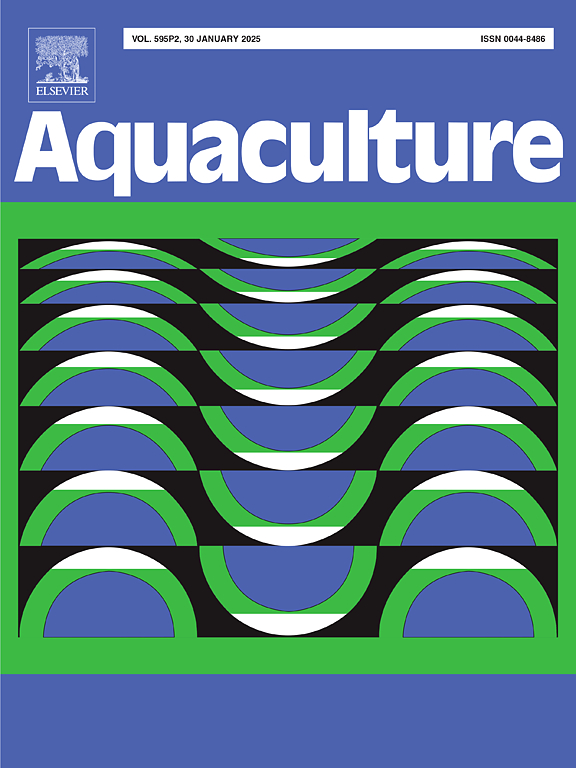Assessing the impact of Lactiplantibacillus plantarum feed additive on Vibrio parahaemolyticus crosstalk and the gill and gut microbiota compositions in Penaeus vannamei
IF 3.9
1区 农林科学
Q1 FISHERIES
引用次数: 0
Abstract
Quorum sensing (QS) regulates the expression of genes involved in biofilm formation and production of virulence factors, including the toxin responsible for the acute hepatopancreatic necrosis disease (AHPND). This communication system also influences the structure of bacterial communities. In light of the concept of a “trained microbiome,” which entails host enhanced readiness to respond to subsequent infections, we explored the effects of freeze-dried whole culture of Lactiplantibacillus plantarum (FD-LAB) on the QS system of Vibrio parahaemolyticus AHPND strain as well as on the gill, stomach, and intestinal bacterial communities of P. vannamei. Phenotypic and qPCR analyses showed that FD-LAB inhibits the growth and biofilm formation of V. parahaemolyticus and downregulates key QS genes luxS, opaR, and aphA. Using a high-throughput Illumina sequencing targeting the V4 region of the 16S rRNA gene, we found out that FD-LAB, when used as a dietary supplement, induces specific changes in the gill and gut microbiota. While the changes in alpha and beta diversity indices were mostly statistically nonsignificant, the relative abundances of specific taxa varied upon FD-LAB supplemented feed intake. Specifically, a number of taxa previously reported to be beneficial on shrimp were differentially abundant in the gills. These include members of the families Rhodobacteraceae, Rubritaleaceae, and Pseudoalteromonadaceae, to name a few. Meanwhile, actinomycetes, lactic acid bacteria, and bacilli were some of the beneficial bacterial groups which were enriched in the stomach and intestinal tissues of P. vannamei fed with FD-LAB supplemented diet. This study demonstrated how FD-LAB can interfere with the virulence and pathogenicity of V. parahaemolyticus, as well as its influence in shaping the gill and gut bacterial communities of P. vannamei. These findings reinforce the potential of FD-LAB as a dietary supplement for shrimp.
求助全文
约1分钟内获得全文
求助全文
来源期刊

Aquaculture
农林科学-海洋与淡水生物学
CiteScore
8.60
自引率
17.80%
发文量
1246
审稿时长
56 days
期刊介绍:
Aquaculture is an international journal for the exploration, improvement and management of all freshwater and marine food resources. It publishes novel and innovative research of world-wide interest on farming of aquatic organisms, which includes finfish, mollusks, crustaceans and aquatic plants for human consumption. Research on ornamentals is not a focus of the Journal. Aquaculture only publishes papers with a clear relevance to improving aquaculture practices or a potential application.
 求助内容:
求助内容: 应助结果提醒方式:
应助结果提醒方式:


